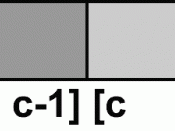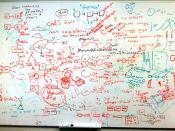Lesson 7
One sample to population T tests
One-Sample Significant Difference Tests
A great deal of inferential statistics is about using procedures to help us infer that a difference does or does not exist between two situations. Knowing whether two things are different allows us to make reliable, valid decisions about that information. How different does a result need to be before we can call it significant (or important)? Another way to ask this question is to ask "how great must the difference between two groups be before we can conclude that the difference is reliable and real, and not just a fluke of the specific samples we have examined?" For example, you know that a mean score of 10 is different from a mean score of 11. But in certain situations these values might be so close to one another that for all intents and purposes, we can act as though they are the same value.
The question is then, what is a big enough difference that will allow us to act as though the two values are in fact different? The answer to this question depends on several factors. For a finding to be statistically significant (big enough), it must be reliable and replicable (repeatable) - you must be able to find it again using the same techniques with a different sample. In order to decide that a result is replicable (and can be generalized to the population) we must use procedures called significance tests.
When you find a "statistically significant difference," this does not mean that you have found "proof" of something. Proof is for courts - in statistics, we say we have supporting evidence for a hypothesis. Also, finding a statistically significant difference may not be of practical use - for example, you may find a...



Stats Notes
I needed an informative paper and this is what I got. Excellent work!
0 out of 0 people found this comment useful.